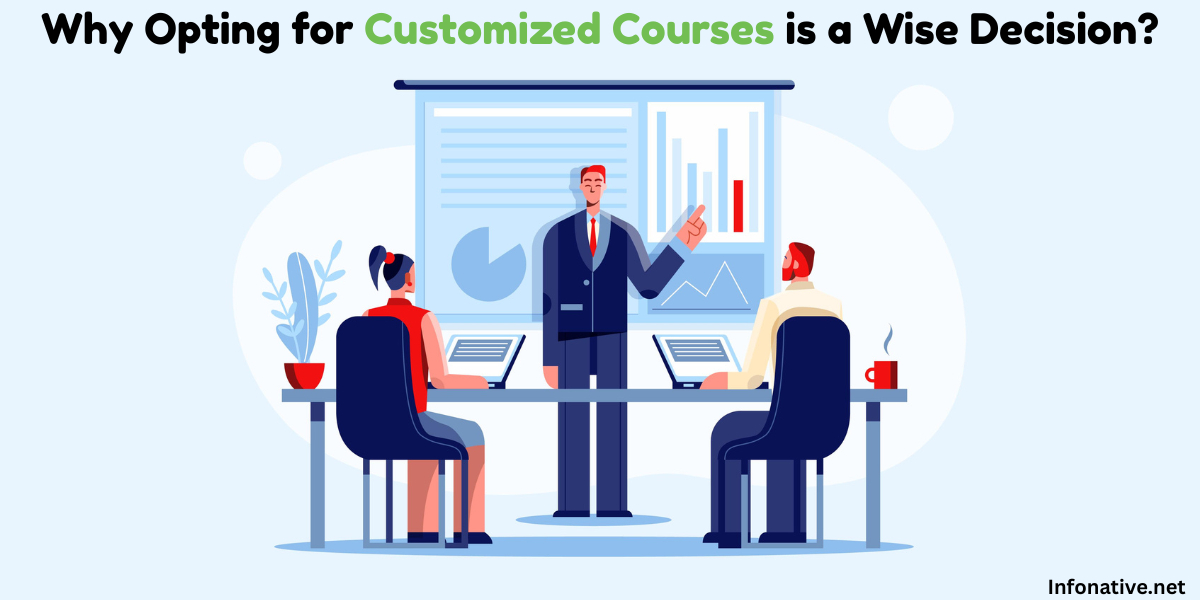Have you ever felt out of place in a learning environment that didn’t really understand your needs? That’s often the case with traditional education—it can feel rigid, generic, and disconnected. But things are shifting. As digital learning continues to evolve, tailored experiences are no longer optional—they’re essential. More individuals and organizations are turning to customized courses for one clear reason: they deliver real results.
What Are Customized Courses?
Customized courses are learning programs that are designed around the specific needs of a learner or group of learners. Instead of following a rigid curriculum, these courses adapt to personal goals, skill levels, industry demands, and even learning styles.
For example, imagine a course in digital marketing. A beginner might need foundational concepts, while a professional could dive into advanced SEO and analytics. With customization, both can thrive in the same learning ecosystem without being held back—or left behind.
The Evolution of Learning Needs
Changing Workforce Requirements
Gone are the days when you learned a skill and stuck with it for life. Today, the job market evolves faster than ever. Roles shift, tools update, and new skills become must-haves in months—not decades.
Customized courses help workers stay competitive. Whether you're a software engineer needing to learn a new language or a manager needing to polish leadership skills, a tailored course keeps your skills razor-sharp.
Learner Preferences in the Digital Age
We binge-watch content, scroll endlessly on social media, and expect personalization in everything—from playlists to shopping. Learning shouldn’t be any different.
Today’s learners crave relevance, speed, and control. And that’s exactly what customized courses offer.
Benefits of Customized Courses
Tailored to Individual Needs
Every learner is unique. Some need visual aids. Others prefer hands-on practice. A one-size-fits-all model can’t cater to this diversity.
Customized learning targets gaps, enhances strengths, and focuses on what really matters to the learner.
Flexibility in Learning Pace and Style
Fast learners can move ahead. Slow learners get the time they need. Whether it's a night owl studying at midnight or a multitasking mom fitting lessons into her lunch break, custom learning adjusts to real life.
Higher Engagement and Retention Rates
When you’re learning exactly what you need, you're naturally more engaged. That engagement leads to better focus, comprehension, and memory.
In fact, customized training often sees up to 60% more engagement compared to generic courses.
Relevance to Real-World Applications
Why learn what you won’t use? Customized courses are often designed with immediate, practical outcomes in mind. That means learners can apply their skills right away—boosting confidence and productivity.
Impact on Corporate Training
Improved Employee Performance
Employees trained with personalized content feel more valued and confident in their roles. That translates into better performance, fewer mistakes, and increased innovation.
Cost Efficiency for Organizations
It might seem that creating custom content costs more—but over time, the return is significant. You’re not wasting money on irrelevant material. You're investing in learning that sticks.
Bridging Skills Gaps
Every team has strengths and weaknesses. Customized training pinpoints those gaps and fills them—strategically and efficiently.
The Role of Technology in Custom Learning
Learning Management Systems (LMS)
Modern LMS platforms allow for dynamic content delivery, progress tracking, and learner feedback—all essential for customization.
AI and Data-Driven Personalization
Artificial intelligence helps personalize learning paths based on behavior, preferences, and performance. It’s like having a personal tutor that evolves with you.
Mobile Learning and Microlearning
Customized content fits perfectly into bite-sized formats and mobile-first design—making it easier to learn on-the-go.
Educational Institutions Adopting Custom Learning
K-12 Education and Differentiated Instruction
Schools are slowly but surely embracing individual learning plans. Teachers now use data to adjust lessons to suit different student levels within the same classroom.
Universities Offering Modular Degrees
Universities are moving towards flexible degrees. Students can now select modules that align with their career goals, personal interests, or emerging market trends.
Challenges and Considerations
Content Development Time and Cost
Creating tailored content takes time, effort, and money. However, the long-term ROI often justifies the investment.
Need for Skilled Instructional Designers
You can’t throw random content together and call it customized. You need experts who understand curriculum design, pedagogy, and audience analysis.
Maintaining Consistency and Standards
It’s crucial to ensure that customized learning still meets industry and educational standards—especially in regulated sectors like healthcare or finance.
Customized vs. Off-the-Shelf Courses
Customized Courses Pros:
• Specific to learner goals
• More engaging and effective
• Higher long-term ROI
Off-the-Shelf Courses Pros:
• Quick deployment
• Lower upfront cost
• Easy scalability
When to Choose Which?
Use off-the-shelf for general skills and compliance training. Go custom when you need depth, strategy, and results.
Future Trends in Customized Learning
• Adaptive Learning Technologies: Systems that change content based on learner performance.
• Gamification: Turning lessons into engaging challenges or games.
• Lifelong Learning Ecosystems: Continuous, personalized education from school to retirement.
Real-Life Success Stories
• A tech company used customized onboarding and reduced new hire ramp-up time by 40%.
• A school district introduced personalized reading plans, resulting in 30% higher literacy rates.
• A healthcare firm created role-specific training modules and saw a 25% increase in productivity.
How to Get Started with Customized Learning
For Learners:
1. Define your learning goal.
2. Choose platforms that offer personalized paths.
3. Track your progress and pivot when needed.
For Organizations:
1. Conduct a skills audit.
2. Partner with instructional designers or eLearning firms.
3. Use analytics to refine the course over time.
Key Takeaways
• Customized courses offer a learner-centric approach that improves engagement, performance, and outcomes.
• Whether you're an individual or a business, tailoring education is no longer a luxury—it's a smart move.
• The right strategy, tools, and team can turn any learning goal into an achievable milestone.
Conclusion
Customized courses provide a direct path to achieving specific goals—academic, professional, or personal. Like a GPS for learning, they adapt to your needs and guide you step by step. With tailored content and flexible pacing, they ensure effective progress. That’s why more individuals and organizations choose customized learning—it’s practical, goal-oriented, and proven to deliver meaningful results.




